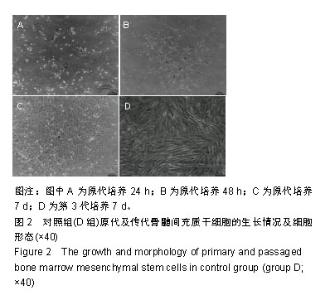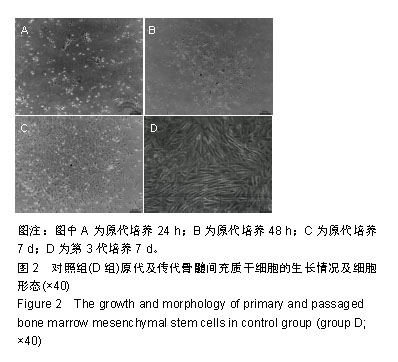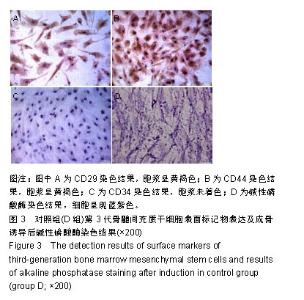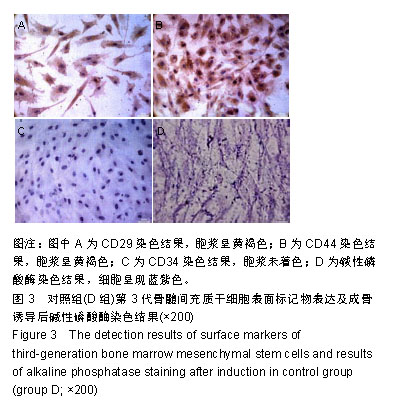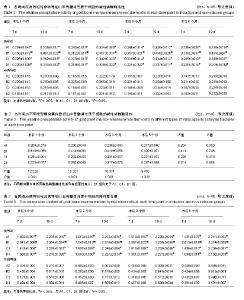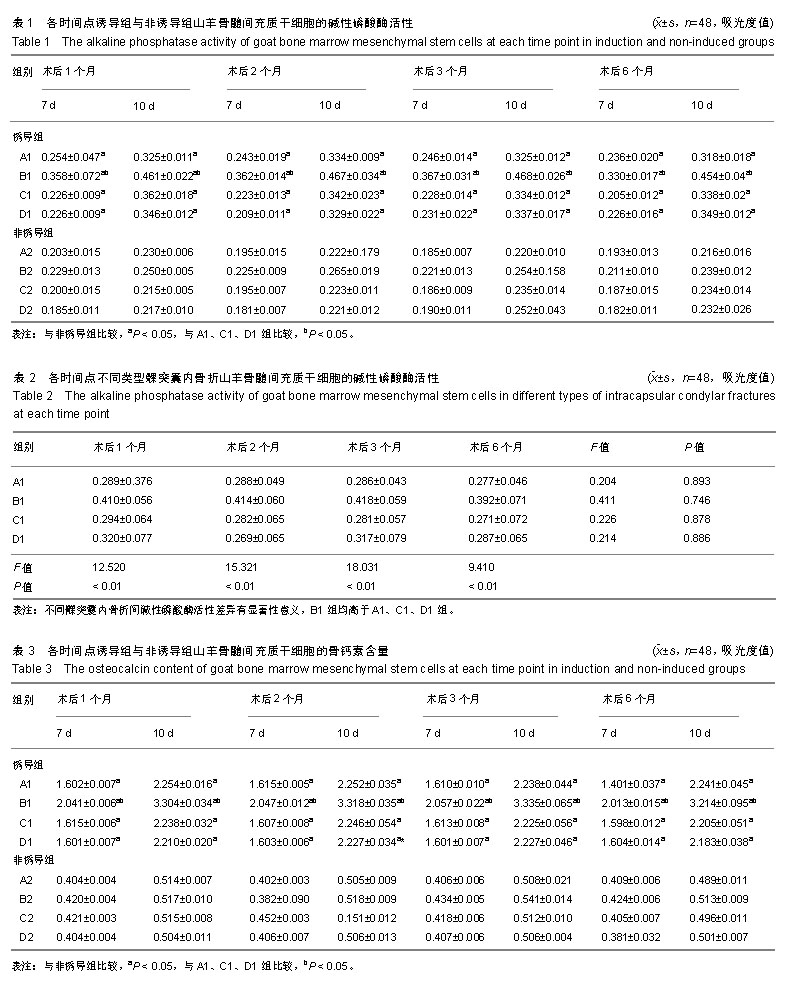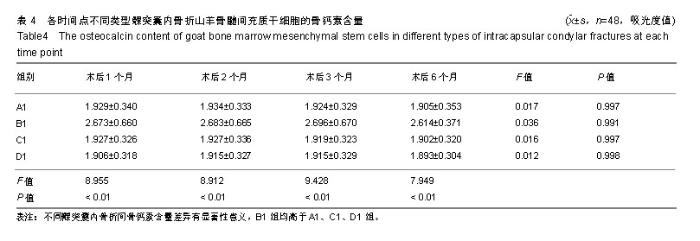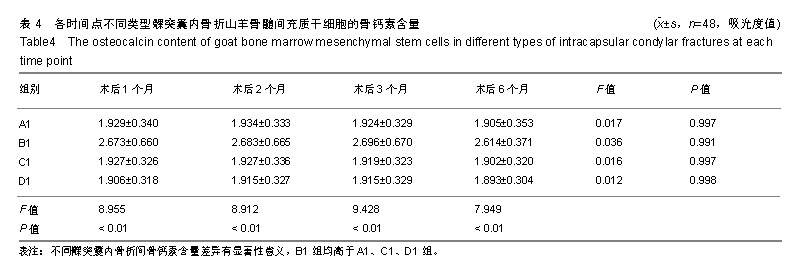| [1]张益. 髁突骨折与颞下颌关节强直临床治疗与研究进展——全国第二次髁突骨折及关节强直专题研讨会有感[J].中华口腔医学杂志, 2016, 51(3):129-132.[2]Duan DH, Zhang Y. A clinical investigation on disc displacement in sagittal fracture of the mandibular condyle and its association with TMJ ankylosis development. Int J Oral Maxillofac Surg. 2011; 40(2):134-138.[3]蔡怡华,陆川,何冬梅,等.导致颞下颌关节强直的成人髁突骨折类型分析[J].中国口腔颌面外科杂志,2014,12(1):39-44.[4]Friedenstein AJ, Chailakhjan RK, Lalykina KS. The development of fibroblast colonies in monolayer cultures of guinea-pig bone marrow and spleen cells. Cell Tissue Kinet. 1970;3(4):393-403.[5]郑有华,苏凯,匡世军,等.人髁突骨髓间充质干细胞体内成骨的实验研究[J].中华口腔医学杂志,2012,47(1):10-13.[6]杨驰,何冬梅,陈敏洁,等.髁突囊内骨折的临床特点和分类研究[J].中国口腔颌面外科杂志,2010,8(3):208-211.[7]张晓强,李旭,吴涛,等. 山羊骨髓间充质干细胞分离培养及向软骨细胞诱导分化[J].南方医科大学学报,2009,29(3):419-422.[8]Li JM, An JG, Wang X, et al. Imaging and histologic features of traumatic temporomandibular joint ankylosis. Oral Surg Oral Med Oral Pathol Oral Radiol. 2014;118(3):330-337.[9]Zhang Y, He DM. Clinical investigation of early post-traumatic temporomandibular joint ankylosis and the role of repositioning discs in treatment. Int J Oral Maxillofac Surg.2006;35(12): 1096-1101.[10]Duan DH, Zhang Y. A clinical investigation on disc displacement in sagittal fracture of the mandibular condyle and its association with TMJ ankylosis development. Int J Oral Maxillofac Surg. 2011; 40(2):134-138.[11]Yan YB, Zhang Y, Gan YH, et al. Surgical induction of TMJ bony ankylosis in growing sheep and the role of injury severity of the glenoid fossa on the development of bony ankylosis. J Craniomaxillofac Surg. 2013;41(6):476-486.[12]Oe K, Miwa M, Sakai Y, et al. An in vitro study demonstrating that haematomas found at the site of human fractures contain progenitor cells with multilineage capacity. J Bone Joint Surg Br. 2007;89(1):133-138.[13]Norman JE. Ankylosis of the temporomandibular joint. Aust Dent J. 1978;23(1):56-66.[14]Oztan HY, Ulusal BG, Aytemiz C. The role of trauma on temporomandibular joint ankylosis and mandibular growth retardation: an experimental study. J Craniofac Surg. 2004; 15(2): 274-282.[15]Yan YB, Duan DH, Zhang Y, et al. The development of traumatic temporomandibular joint bony ankylosis: a course similar to the hypertrophic nonunion. Med Hypotheses. 2012;78(2):273-276.[16]Hofmann A, Ritz U, Hessmann MH, et al. Cell viability, osteoblast differentiation, and gene expression are altered in human osteoblasts from hypertrophic fracture non-unions. Bone. 2008; 42(5):894-906.[17]Deng TG, Liu CK, Liu P, et al. Influence of the lateral pterygoid muscle on traumatic temporomandibular joint bony ankylosis. BMC Oral Health. 2016;16(1):62.[18]Yan YB, Li JM, Xiao E, et al. A pilot trial on the molecular pathophysiology of traumatic temporomandibular joint bony ankylosis in a sheep model. Part I: Expression of Wnt signaling. J Craniomaxillofac Surg. 2014;42(2):e15-22.[19]Yan YB, Li JM, Xiao E, et al. A pilot trial on the molecular pathophysiology of traumatic temporomandibular joint bony ankylosis in a sheep model. Part II: The differential gene expression among fibrous ankylosis, bony ankylosis and condylar fracture. J Craniomaxillofac Surg. 2014;42(2): e23-28.[20]Fernandes M, Valente SG, Sabongi RG, et al.Bone marrow- derived mesenchymal stem cells versus adipose-derived mesenchymal stem cells for peripheral nerve regeneration.Neural Regen Res. 2018;13(1):100-104.[21]谭方正,刘新,朴成哲.骨髓间充质细胞的研究进展[J].沈阳医学院学报,2013,15(4):245-247,250. [22]Kang P, Shen B, Yang J, et al. Repairing defect and preventing collapse of canine femoral head using titanium implant enhanced by autogenous bone graft and rhBMP-2. Connect Tissue Res. 2007;48(4):171-179.[23]张科强,刘一,王宝刚,等.体外冲击波诱导骨髓间充质干细胞向成骨细胞转化过程中c-fos、c-jun的表达[J].山东医药, 2008,48(4): 63-64.[24]Diefenderfer DL, Osyczka AM, Garino JP, et al. Regulation of BMP-induced transcription in cultured human bone marrow stromal cells. J Bone Joint Surg Am. 2003;85-A Suppl 3: 19-28.[25]董雪,侯佳琪,梁旭月,等.骨钙素的研究进展[J].吉林医药学院学报, 2016,37(1):67-69.[26]冯智强, 邱亚汀,杨驰.羊髁突囊内骨折坚强内固定动物模型的建立[J].中国口腔颌面外科杂志,2009,7(2):143-147.[27]王光素,唐正龙.颞下颌关节强直动物模型的研究状况[J].全科口腔医学电子杂志,2017,4(18):3-6,8. [28]Sun J, Li J, Li C, et al. Role of bone morphogenetic protein-2 in osteogenic differentiation of mesenchymal stem cells. Mol Med Rep. 2015;12(3):4230-4237.[29]Ishikawa H, Kitoh H, Sugiura F, et al. The effect of recombinant human bone morphogenetic protein-2 on the osteogenic potential of rat mesenchymal stem cells after several passages. Acta Orthop. 2007;78(2):285-292.[30]Ueno M, Uchida K, Takaso M, et al. Distribution of bone marrow-derived cells in the fracture callus during plate fixation in a green fluorescent protein-chimeric mouse model. Exp Anim. 2011; 60(5):455-462.[31]He LH, Xiao E, Duan DH, et al. Osteoclast Deficiency Contributes to Temporomandibular Joint Ankylosed Bone Mass Formation. J Dent Res. 2015;94(10):1392-1400. |
